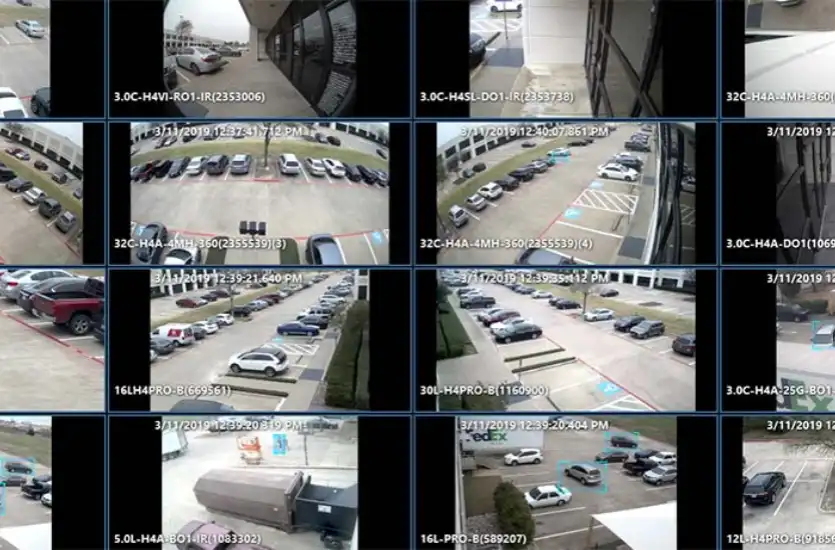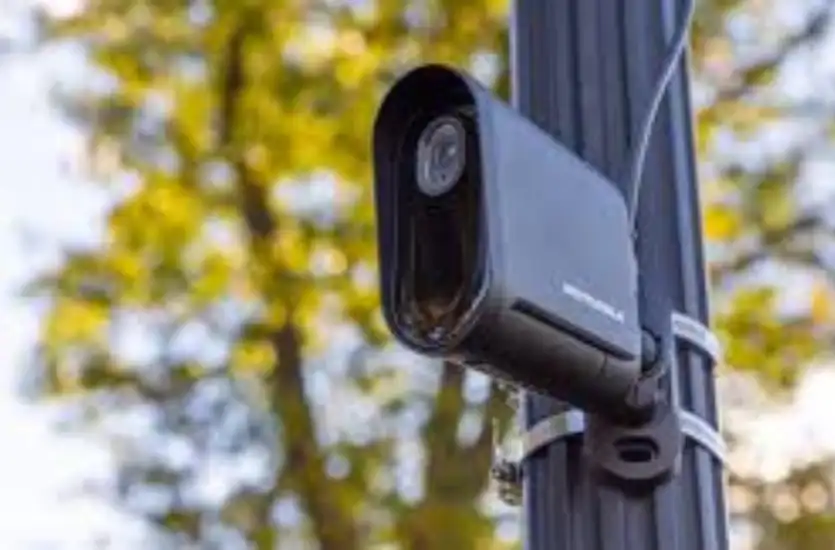Imagine a technology that can identify vehicles in seconds, providing insights and aiding in decision-making across multiple industries. License Plate Recognition (LPR) technology has become an invaluable tool in security, traffic control, and law enforcement. By automatically capturing and processing license plate data, LPR systems simplify the identification of vehicles, helping to address challenges such as unauthorized access, traffic violations, and public safety concerns.
In a previous article, LPR Technology: How License Plate Readers Enhance Security in Florida’s Communities, we explored the broader benefits of LPR systems and how they are transforming operations for organizations worldwide. This article will focus on the more specific mechanics behind LPR technology.
From capturing images to processing the information into actionable data, we’ll unpack how this technology operates at every step. Whether you’re a security professional, traffic manager, or simply curious about the process, this breakdown will provide a deeper understanding of the science and innovation driving LPR systems.
Let’s explore how these systems work—from the initial capture of an image to the final integration of data.
The Key Components of LPR Systems
Before we break down the components, let’s talk just a bit about the LPR industry. Many people don’t realize that LPR technology isn’t new. In fact, it was first introduced back in 1976 in the United Kingdom and was later put into use in 1979. This technology has evolved over the decades into what we see today—a $0.48 billion industry in 2023 that will likely reach $1.025 billion by 2032.
So, what are the components behind this technology? We’re glad you asked.
Cameras
At the heart of these systems are the eyes—the cameras that capture license plate images. These high-resolution cameras are designed to precisely identify license plates, regardless of the vehicle’s speed or environmental conditions. Fixed cameras are strategically positioned at toll booths, parking entrances, or along highways, providing consistent coverage in a specific area. On the other hand, mobile cameras are often mounted on law enforcement vehicles, to provide real-time information during traffic stops, accidents, and potential altercations.
To address low-light or nighttime conditions, many LPR cameras utilize infrared technology. This allows them to detect and capture clear images of license plates even in complete darkness.
Optical Character Recognition (OCR)
Clearly, these systems need more than just cameras to capture this type of data, especially when vehicles are moving quickly. That’s where OCR comes into play. Once the camera captures an image, the system uses Optical Character Recognition (OCR) technology to interpret the license plate.
OCR software analyzes the captured image, isolates the license plate region, and translates the alphanumeric characters into readable text. This is a significant step in the process, as it converts visual data into actionable information. Modern OCR algorithms are designed to handle challenges such as varied fonts, angled plates, or partial obstructions.
Processing Unit
Lastly, we need something to turn all of this data into something useful—the system’s brain. The system’s computing unit processes the captured and decoded data. This unit—often a powerful onboard processor—handles large volumes of information and runs algorithms that match license plate data against stored databases.
Processing units are optimized for speed and efficiency, allowing them to handle tasks like identifying stolen vehicles or verifying parking access without delay. Their robust computing capabilities make them absolutely fundamental to LPR functionality.

How LPR Technology Captures License Plate Data
Now that we’ve discussed the components let’s explore how these systems work together to capture and process license plate data. LPR technology operates through a precise sequence of steps, combining advanced hardware and software to extract accurate information from passing vehicles.
Here’s how it works:
Step 1: Detecting the Vehicle
The process begins with vehicle detection. Cameras use motion sensors or pre-programmed triggers to identify vehicles entering the camera’s field of view. These systems are calibrated to focus on areas where license plates are typically located, ensuring efficient image capture.
Step 2: Capturing the Image
Once a vehicle is detected, high-resolution cameras take multiple images, often from different angles, to provide a complete view of the license plate. Infrared technology enhances this step by making plates visible even in challenging lighting conditions, such as low light, shadows, or nighttime settings.
Step 3: Pre-Processing the Image
After capturing the images, the system applies software filters to improve readability. This includes removing noise, adjusting contrast, and sharpening the image. These adjustments help highlight the license plate and reduce interference from environmental factors like glare, rain, or dirt.
Step 4: Isolating the License Plate
Next, the software isolates the license plate from the rest of the image. Using algorithms, the system identifies the plate’s dimensions and location, cropping the surrounding elements such as the vehicle’s body or background distractions.
Step 5: Decoding with OCR
OCR software deciphers the alphanumeric characters on the plate with the license plate isolated. OCR algorithms account for different fonts, plate sizes, and potential obstructions like scratches or debris, converting the image into text that can be processed further.
Step 6: Transmitting the Data
Finally, the decoded license plate data is transmitted to a central processing unit or connected database. This step allows the information to be matched against various records, whether for security checks, toll collections, or traffic monitoring.

The Role of OCR in Translating Images into Data
At this point, many people begin to wonder—what happens if LPR gets it wrong? And certainly, this is a valid concern. Stopping the wrong vehicle can lead to unnecessary delays and frustration, not to mention the potential impact on addressing actual incidents. That’s why LPR systems are equipped with the OCR algorithms we mentioned earlier. Additionally, error correction mechanisms are used to reduce inaccuracies and refine the data.
Here’s how it works.
OCR Algorithms
The OCR process starts by analyzing the captured image of a license plate and identifying the region containing alphanumeric characters. The algorithm examines the contrast between the characters and the background, isolating each symbol for interpretation.
Once the plate area is identified, the system applies pattern recognition to match characters against a preloaded database of fonts and styles. Modern OCR software is designed to handle many different commonly used (and not so commonly used) fonts, plate designs, and formatting conventions. Spacing irregularities and obstructions like dirt, scratches, or debris are accounted for through advanced preprocessing techniques that “clean up” the image before character extraction begins.
Error Correction Mechanisms
To further minimize inaccuracies, LPR systems incorporate error correction mechanisms. These mechanisms include checks against known license plate formats, such as state-specific designs or character patterns. For example, a U.S. plate will typically follow a predictable format, and any deviations can prompt the system to reprocess the image or flag it for review.
Additionally, the data extracted by OCR is cross-verified with connected databases. This step prioritizes that minor errors, such as misinterpreted characters, do not result in incorrect matches. If a plate number is flagged as unrecognized or mismatched, the system can prompt a secondary scan or notify an operator for manual validation.
LPR technology significantly reduces the risk of false identifications by combining sophisticated OCR algorithms with layered error correction and database cross-referencing. This meticulous approach balances speed and reliability, helping the system maintain confidence in its outputs while addressing things such as dirty plates or unique fonts.
Data Transmission and Integration
Once a license plate is captured and decoded, the next step is transmitting and integrating the data for meaningful use. This stage is where the information gathered by the LPR system connects with broader networks, providing insights for security, traffic management, or law enforcement.
Let’s break it down into two steps.
Step 1: Transmitting Data to Central Systems
After the OCR process, the decoded license plate information is sent to a central processing unit or server. This transmission typically happens over secure, encrypted networks to protect the data from unauthorized access. The speed and reliability of this step are super important, especially in situations where immediate decisions are required, such as alerting law enforcement or granting access to restricted areas. Advanced systems may utilize wireless networks or cloud-based platforms to handle large volumes of information.
Step 2: Integration with Databases
Once the data reaches its destination, it is cross-referenced with various databases. These might include law enforcement watchlists, toll payment systems, or parking management records.
The system automatically compares the license plate against stored entries to determine whether any action is required. Integration with such databases allows for efficient monitoring and response.
Bringing it All Together: The Power of LPR Technology
License Plate Recognition technology changes how organizations monitor, secure, and manage vehicle-related activities. With advanced systems like Motorola Solutions’ Avigilon H4 LPC camera, L6Q Quick-Deploy LPR Camera System, and Vigilant VehicleManager, businesses and municipalities can efficiently track vehicles.
Imagine a system deployed across Florida cities like Deerfield Beach, Largo, Pompano Beach, and Tamarac. In Deerfield Beach, a parking facility uses LPR cameras to manage access. Meanwhile, in Largo, law enforcement relies on mobile LPR units to identify stolen vehicles. Over in Pompano Beach and Tamarac, quick-deploy systems assist with event traffic control and community safety. These technologies are simply examples of how LPR adapts, from static monitoring to on-the-go applications and all of these cameras can aggregate their license plate capture data into a single, cloud-hosted database which can be searched by multiple public safety agencies across the country.
To learn how LPR solutions can improve your security and operations, contact EMCI Wireless today. With decades of expertise, we’ll help you find the system that fits your needs.

